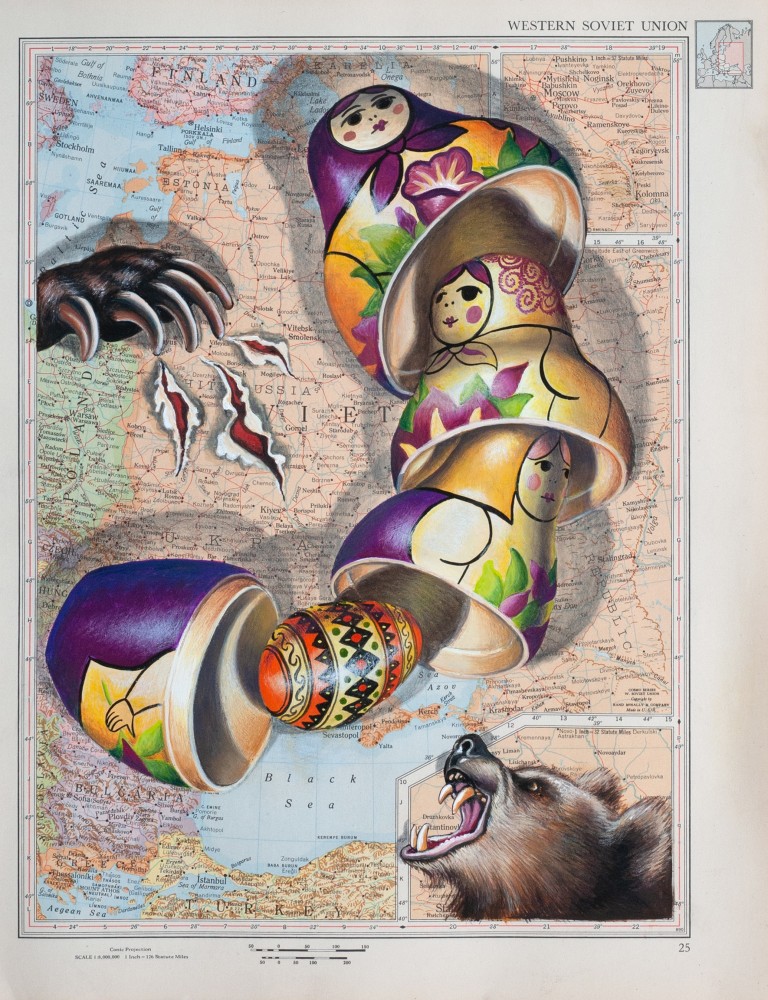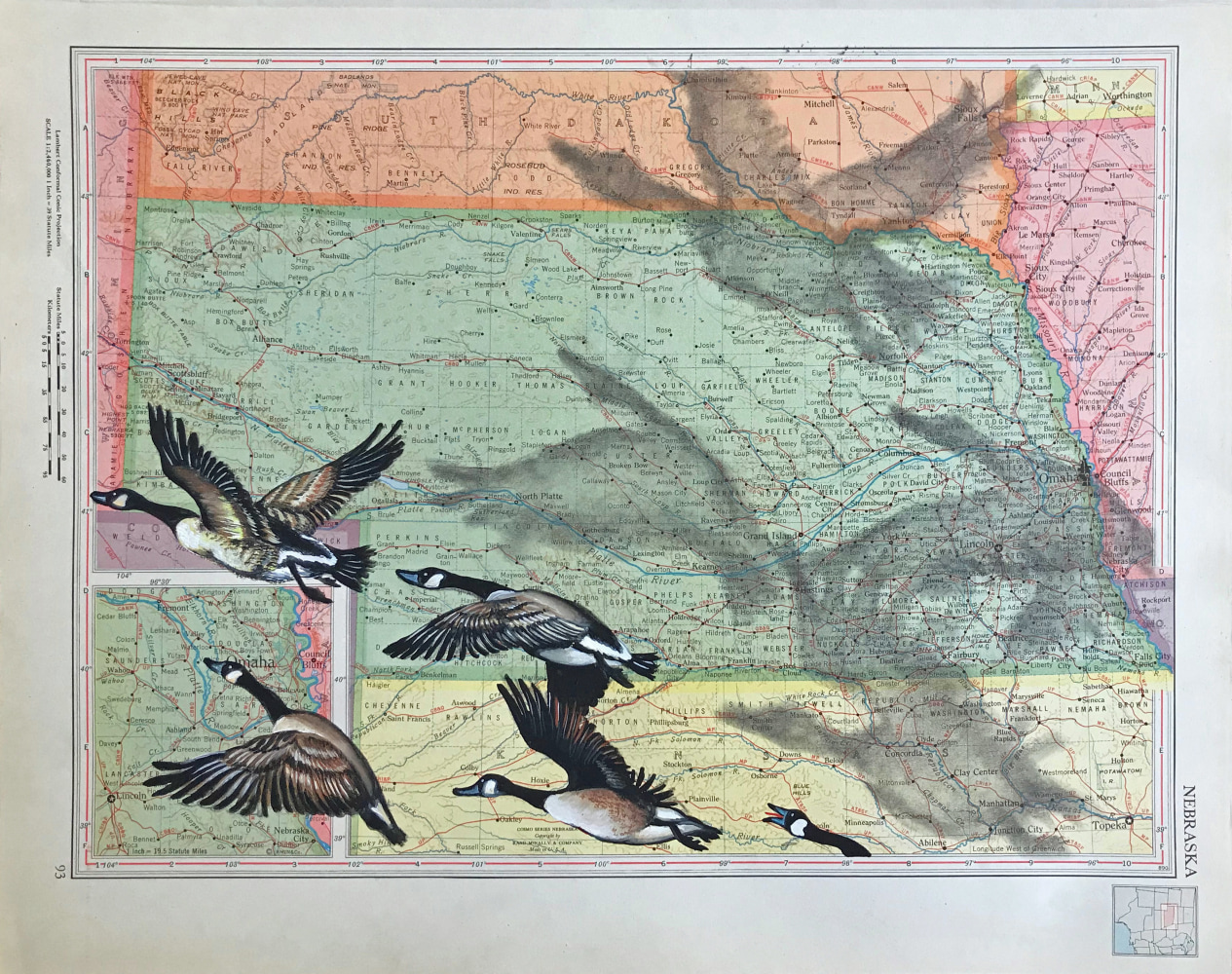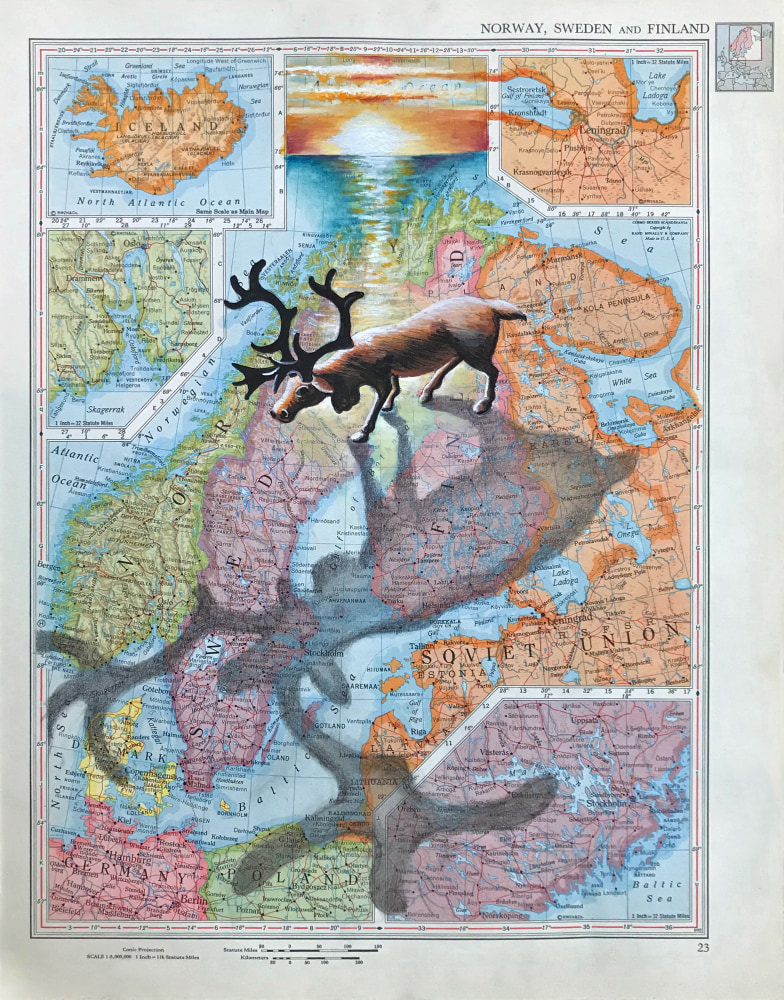
Incorporating vintage pages sourced from a 1946 Rand-McNally World Atlas, Carol Wax’s ongoing Map series addresses the void between natural and political borders. Rendered with dramatic lighting effects and exaggerated perspectives, her images evoke societal mythologies and psychological narratives that portray both humor and menace. Age-old hostilities between Ukraine and Russia are rendered through familiar symbols rather than disputed land. The tiny poisonous dart frogs of Colombia’s jungles serve as emblems of the country rather than its rivers and cities. Related animal life populate other land masses, giving a tongue-in-cheek clue to location. Carol Wax has exhibited widely since the early 1980s and has been awarded the Individual Support Grant from the Adolph and Esther Gottlieb Foundation, Inc., two Artist Fellowships from the New York Foundation for the Arts, a Concordia Career Advancement Award from NYFA, The Louise Nevelson Award for Excellence in Printmaking from the American Academy of Arts and Letters, and residencies at The MacDowell Colony and Marie Walsh Sharpe Art Foundation's Space Program to name a few. Her work can be found in numerous museum collections such as The Metropolitan Museum of Art, The Brooklyn Museum, The New York and Boston Public Libraries, The Philadelphia Museum of Art, The Library of Congress, and The National Museum of American Art, Smithsonian Institution.
Artist Statement:
My paintings and drawings depict ordinary objects as icons possessing inner lives and symbolic subtexts. Often inspired by current events, compositions are based on dioramas of vintage artifacts placed in unexpected juxtapositions. Toys (the Rosetta Stones of social mores), mechanical devices, and patterned items are favorite models. Rendered with dramatic lighting effects and exaggerated perspectives, images evoke cultural mythologies and psychological narratives that portray humor and menace in our possessions and how they reflect our humanity.
My ongoing series of mixed-media works incorporating maps addresses the void between cartography and atlases of emotions. In the accompanying selection of images, age-old hostilities between Ukraine and Russia are best rendered through cultural symbols rather than disputed borders. I find the tiny poisonous dart frogs of Colombia’s jungles more emblematic of the country than its rivers and cities. An unrealistic fantasy of moving to Lapland to herd reindeer makes Finland more real to me than names of towns I can’t pronounce.
Similarly, differences in how environments are experienced subjectively and documented objectively are addressed in my “Snapshot Landscapes” series. Weaving planes of reality and sur-reality, these images conjure memories and associations with scenes truer to me than those recorded by the camera.
While I work in a manner that may be labeled representational, stylistically my approach to diverse subjects forms a common thread that conveys an anima in the inanimate.






